Can an older Audi make financial sense in today's high-priced market?
In today's very expensive used car market, many shoppers are now looking for "older" models that have aged well as a way to save significant dollars. And a lower-mileage, older Audi could be a viable and more economical option, with the very important caveat being that it has to have been well-maintained.
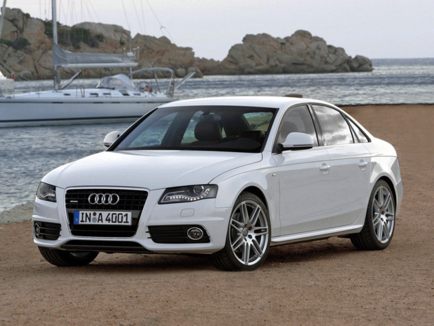
Audis are clearly of high quality and possess sophisticated engineering to produce luxury vehicles with superior driving capabilities.
On the other hand, when you buy an older vehicle to save money, you run the risk of offsetting any initial upfront savings with possibly hefty repair bills going forward. And Audi's reputation for reliability is only about average.
Couple that with higher than average repair and maintenance costs, and a car-buyer looking for an older Audi should be a very careful and picky shopper.
Overall, history has proven that a previously well-maintained Audi can last in the 150,000 to 200,000 mile range before usually requiring major repairs. But again, this longevity also depends on how well they've been maintained and driven.
So, here ...
- We'll do an overview of some popular older Audi models, generally 10+ years old.
- We'll also list the pros and cons that each model is known for.
- Followed by possible mechanical problems, based on each model's history, that should be checked before buying.
- And then we'll summarize the overall pros and cons of an older Audi worth consideration by potential buyers today.
But first, two very important suggestions ...
1. Things To Do When Considering An "Older" Audi:
Locate Lower Mileage Vehicles: They are certainly out there to be found with careful and patient shopping. Be willing to drive a distance if you have to.
Vehicle History and Maintenance: Ask for the vehicle history report (CarFax or AutoCheck) as well as documented maintenance and repair records. If not provided by the dealer or private seller, it's best to move on.
Pre-Purchase Inspection: Have the vehicle independently inspected before making a final decision. This usually will cost in the $150-$200 range but is well worth it given the potentially thousands in savings over the long term.
2. Know How To Get The Lowest Used Car Price:
Get Dealers To Compete For your Business: When you are searching vehicles to possibly purchase, the following is the absolute best way to get the lowest price, and it is extremely easy and stress-free.
Just go to a national car listing site, (I happen to prefer CarsDirect.com for their massive dealer participation and ease of use, although others will get the job done as well) and find several listed vehicles that you may be interested in.
Then write something like the following in the "Check Availability" box or "Contact Dealer" box or whatever the site you are using uses.
"Hello, I've contacted several dealers about cars I am interested in and am looking for the best value. I am also a serious buyer planning to make a decision soon. Please send me your best out-the-door price. Thank you.
After receiving the offers, follow up by explaining that based on the price, you're leaning in another direction but still really like their car and would certainly consider another offer. When dealers drop out, you'll know you're at the best price.
Using the internet to get dealers to compete for your business is extremely important. More details on this and how to intereact with the dealers can be found here at Best Used Car Buying Techniques.
Popular Older Audi Models
Just a little history first: It was in 1980 that Audi introduced the all-wheel drive quattro. Previously, such drives were only available on trucks and SUVs.
The response was an outright sensation. And Audi has never looked back and has maintained its reputation as a high quality innovator.
Additionally, Audi is one of only several automakers using aluminum space frame technology. These vehicles are substantially lighter than their steel-bodied counterparts and this weight difference improves handling, acceleration and fuel consumption, while reducing noise and vibration.
Audi's reputation for producing high performance vehicles is also coupled with some of the best crafted interiors available anywhere. And perhaps best for car-buyers, they are typically priced below their luxury vehicle competitors.
Audi A3 Sportback: The A3 was introduced into the U.S. in 2006, and this second generation was produced through 2013. Smaller and lighter than its bigger brother, the A4, it still packs the same turbocharged engine.
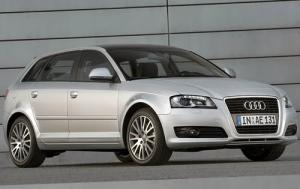
Nor does this sport wagon skimp on the kind of high quality refinements and driving dynamics one would expect from an Audi.
Powering the front-wheel-drive A3 2.0T is a 2.0-liter turbocharged four-cylinder engine that's good for 200 horsepower and 207 pound-feet of torque. It can sprint from a standstill to 60 mph in a very quick 7 seconds.
Older Audi A3 2.0T's from this generation can be found with either its standard issue 6-speed manual transmission or Audi's optional S tronic sequential-shift automated gearbox.
Under the hood of the 3.2 Quattro (all-wheel drive) is a 3.2-liter V6 engine that produces 250 horsepower and 236 lb-ft of torque.
Paired with the S tronic transmission and all-wheel drive, the 3.2's additional weight means performance isn't improved all that much over the 2.0T, although the all-wheel drive is certainly a plus for those who live in areas with inclement weather conditions.
You May Also Like:
What Is Wholesale Value Anyway?
The 3.2 Quattro can still make the 0 - 60 mph run in an impressive 6.8 seconds and its gas mileage comes in at 18 mpg city and 25 mpg highway. For 2010, the A3 3.2 was dropped while a diesel engine model was added.
Overall Audi A3 Pros: Athletic road manners, luxurious and versatile interior space.
Overall Audi A3 Cons: Pricey, rear seat is tight for taller passengers.
Possible 2006 - 2013 Audi A3 Mechanical Problems
These are the more common mechanical issues reported by some owners which should therefore be included in an inspection before buying:
Timing Belt Tensioner Failure: Some Audi A3 models with the 2.0-liter TFSI engine had issues with timing belt tensioners failing prematurely. This could lead to timing belt slippage or failure, potentially causing serious engine damage.
Dual Mass Flywheel (DMF) Failure: The dual mass flywheel in some A3s, particularly those equipped with manual transmissions, could wear out prematurely, leading to excessive vibrations, noise, and difficulty in shifting gears.
Oil Consumption: Some models, particularly those with the 2.0 TFSI engine, were known to consume oil at a higher rate than normal. This issue could be attributed to several factors, including faulty piston rings or valve stem seals.
Electronic Component Failures: Issues with the electronic stability control (ESC), ABS system, or electrical sensors occurred, leading to dashboard warning lights or impaired performance.
Suspension Components Wear: Some owners reported premature wear of suspension components such as control arms, bushings, and ball joints.
Water Pump Failure: Water pump failures have been reported in some A3 models, particularly those equipped with the 2.0 TFSI engine.
Audi A4: It's the A4 that really launched Audi into a bigtime contender. Since the mid 1990's, the A4 has been a favorite of luxury sedan buyers due to its responsive handling, athletic engines, comfortable surroundings, quattro all-wheel drive availability, and solid build quality.
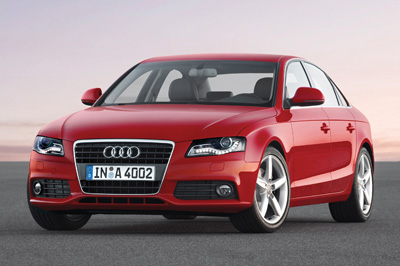
I'm mostly focused here on older A4 models, and specifically the third and fourth generations, produced fom 2006 - 2016. Bottom line? Whether sedan, convertible, or wagon, the A4 is a lot of fun on a road trip.
What's more, these A4s can be considered "economical", in the sense of the total package of features as well as the driving ability. Also, the gas mileage for the A4 is quite good. For the A4 2.0T, for example, it's 24 mpg city and 32 mpg on the highway.
The A4 is also quite versatile in terms of meeting family needs, typically available as a sedan, cabriolet (convertible) or even as a wagon (the Avant). And with 60 cubic feet of cargo space in the Avant, this quattro 4-wheel drive gives families an outstanding alternative to an SUV with its much better fuel efficiency and far superior driving dynamics.
Overall Audi A4 Pros: Luxurious interior, high quality materials, engaging drive, all-wheel-drive availability.
Overall Audi A4 Cons: A bit short on low-end torque, cramped back seat.
Possible 2006 - 2016 Audi A4 Mechanical Problems
These are the more common A4 mechanical issues reported by some owners which should therefore be included in an inspection before buying:
Oil Consumption: Some models with the 2.0 TFSI engine experienced higher-than-normal oil consumption, which could be attributed to various factors, including piston ring wear or valve stem seal degradation.
Timing Chain Tensioner: Some 2.0 TFSI engines experienced timing chain tensioner failures.
Transmission Issues: Some owners reported transmission problems, such as rough shifting, slipping, or premature failure, particularly with the Multitronic continuously variable transmission (CVT) and the dual-clutch S-Tronic transmission.
Electrical Gremlins: Some owners experienced electronic issues, including malfunctioning sensors, issues with the MMI (Multi Media Interface) system, or intermittent electrical faults.
Suspension Components: Premature wear of suspension components, such as control arms, bushings, and ball joints, could occur, leading to poor handling, vibrations, or clunking noises from the suspension.
Audi A6: The midsize A6 certainly can offer a lot of bang for the buck. And the design could arguably be the best in its class, the materials are top-of-the-line, and the driving performance is very capable, yet refined.
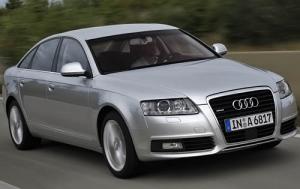
The A6 redesign for the 2005 model year (third generation) added new styling, more space, and more power ... and was produced until 2011. The wheelbase grew by 3.2 inches compared to the previous 1998-2004 A6 generation.
The sedan choices were either the 3.2 model with a 255 horsepower V6 engine or the 4.2 with a 335 horsepower V8. Both were coupled with a 6-speed automatic transmission with manual-shift capability, as well as Audi's quattro all-wheel drive.
The next generation (its fourth), produced through 2016 before a facelift, had mixed reviews. Pluses include its larger size with best-in-class rear legroom and trunk space.
However, its inline-4 2.0 TFSI engine, while still quite impressive, was considered a bit of a letdown when compared to the 6-cylinder engines of lighter competitors. That said, the A6 sports sedan earns high praise with its V6 3.0 TFSI engine for both power and fuel efficiency.
Overall Audi A6 Pros: Elegant and refined cabin, capable handling, powerful V8 engine available, all-wheel-drive availability, lower priced than other European rivals.
Overall Audi A6 Cons: V6 is short on low-end torque, handling not quite as athletic as some rivals, no manual transmission option.
Possible 2005 - 2016 A6 Mechanical Problems
These are the more common A6 mechanical issues reported by some owners which should therefore be included in an inspection before buying:
2005-2011 (Third Generation):
Timing Chain Tensioner: Some A6 models, particularly those equipped with the 3.2-liter V6 engine, experienced issues with the timing chain tensioner. Failures in the tensioner could lead to timing chain slack, resulting in engine timing problems, noise, or even engine damage.
Transmission Issues: Some A6 models equipped with the Multitronic continuously variable transmission (CVT) or the Tiptronic automatic transmission had reported problems such as rough shifting, slipping, or premature failure.
Electrical Issues: Some owners reported electronic issues, including malfunctioning sensors, problems with the MMI (Multi Media Interface) system, or intermittent electrical faults.
Suspension Components Wear: Premature wear of suspension components, such as control arms, bushings, and ball joints, could occur, leading to poor handling, vibrations, or noises from the suspension.
Oil Consumption: Some models, particularly those equipped with the 3.0 TFSI engine, were reported to have higher-than-normal oil consumption. This issue could be attributed to factors such as piston ring wear or valve stem seal degradation.
2012-2016 (Fourth Generation):
Turbocharger Issues: Turbocharger failures have been reported in some A6 models, particularly those equipped with the 2.0 TFSI engine. Symptoms may include loss of power, unusual noises from the turbocharger, or exhaust smoke.
Water Pump Failure: Water pump failures have been reported in some Audi A6 models, which could lead to coolant leaks, overheating, and potential engine damage if not addressed promptly.
Audi TT: The TT is a dynamic and elegant vehicle that's too luxurious to be a "true sports car". The super sleek looking TT is better described as a "luxury sport coupe".
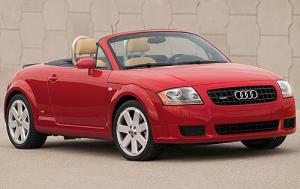
2008 brought the TT's first redesign since it debuted in 2000 (Audi skipped the TT for the 2007 model year) and it was produced through the 2014 model year. It is slightly longer (5 inches), yet actual curb weight is down.
While the interior maintained its often copied metallic highlights and high quality materials, this second generation TT can be found in two trims: the 2.0T, with a 2.0-liter 200-horsepower turbocharged four-cylinder engine that replaced the 1.8T, and the 3.2 Quattro with a 250-horsepower V6 and all-wheel drive, available in a either hatchback coupe or roadster body styles.
The first-generation TT was introduced for the 2000 model year and carried through the 2006 model. Originally, it was only available as a hatchback coupe and was powered by Audi's very capable 1.8-liter 180-horsepower turbocharged inline-4.
The 2001 model year saw the introduction of both the roadster and 225-horsepower Quattro versions. In 2003, an automatic transmission, with six speeds, became available for the first time.
However, the most significant change for this generation came in the 2004 model year when the TT's 250-horsepower 3.2-liter V6 version and outstanding six-speed auto-manual gearbox was introduced.
Overall Audi TT Pros: Beautiful interior, sporty exterior design, capable handling, available all-wheel drive, excellent auto-manual transmission.
Overall Audi TT Cons: Expensive, handling trails some top competitors, useless back seat in coupe.
Possible 2000 - 2014 Audi TT Mechanical Problems
These are the more common TT mechanical issues reported by some owners which should therefore be included in an inspection before buying:
2000 - 2006 (First Generation):
Coil Pack Failure: This version, particularly models equipped with the 1.8T engine, had issues with ignition coil pack failures. This could lead to misfires, rough idling, and loss of engine power.
Window Regulator Failure: Some owners experienced problems with the power window regulators, resulting in windows getting stuck or failing to operate properly.
Instrument Cluster Pixelation: Over time, some LCD screens in the instrument cluster could suffer from pixelation or complete failure, making it difficult to read information such as the odometer, fuel gauge, or warning lights.
Haldex Coupling Failure (Quattro models): Audi TT models equipped with Quattro all-wheel drive (AWD) system may experience issues with the Haldex coupling, which distributes power between the front and rear wheels. Failures could result in drivability issues or complete loss of AWD functionality.
Turbocharger Oil Consumption: Some Audi TT models with turbocharged engines, particularly the 1.8T, were known to consume oil at a higher rate than normal. This could be caused by factors such as worn piston rings or valve stem seals.
2008 - 2014 (Second Generation)
Water Pump Failure: Water pump failures have been reported in some of these TT models, particularly those equipped with the 2.0T engine. A failing water pump can lead to coolant leaks, overheating, and potential engine damage if not addressed promptly.
Direct-Shift Gearbox (DSG) Issues: Audi TT models equipped with the Direct-Shift Gearbox (DSG) transmission may experience issues such as rough shifting, hesitation, or failure to engage gears.
Electronic Component Failures: Some models experienced electronic issues, including malfunctioning sensors, problems with the MMI (Multi Media Interface) system, or intermittent electrical faults.
Suspension Components Wear: Premature wear of suspension components, such as control arms, bushings, and ball joints, could occur, leading to poor handling, vibrations, or noises from the suspension.
Oil Consumption: Some of these Audi TT models, particularly those equipped with turbocharged engines, were reported to have higher-than-normal oil consumption.
Audi S4: The S4 is an impressive, high-performance version of the A4. This car is an excellent balance of performance and comfort and will be appreciated by drivers who value a combination of superior driving dynamics, versatility, and luxury.

The S4's fifth generation debuted for the 2010 model year and was produced through 2016. Available in sedan form only (the convertible was replaced by the S5 Cabriolet), this S4 is equipped with a supercharged 3.0-liter V6 that pumps out 333 horsepower and 325 pound-feet of torque.
This engine is paired with either a standard 6-speed manual transmission or an optional 7-speed dual-clutch automated manual (called the S tronic) and Audi's sure-footed Quattro all-wheel-drive system.
The previous fourth generation was produced for the 2006 - 2009 model years. This version was offered in both sedan, convertible (2009 was a convertible only year) and wagon (Avant) forms and were powered by a 4.2-liter V8 that output 340 horsepower and 302 lb-ft of torque.
These Quattro all-wheel-drive models came with either a 6-speed manual transmission or a 6-speed automatic.
Overall Audi S4 Pros: Lots of power, excellent handling, luxurious cabin, multiple body styles, standard all-wheel drive.
Overall Audi S4 Cons: Cramped back seat, overabundance of button controls.
Possible 2006 - 2016 Audi S4 Mechanical Problems
These are the more common S4 mechanical issues reported by some owners which should therefore be included in an inspection before buying:
2010 - 2016 (Fourth Generation)
Supercharger/Turbocharger Issues: Some S4 models equipped with the supercharged V6 engine (3.0 TFSI) had issues with the supercharger, such as noise, bearing wear, or failure.
Transmission Problems: Some owners reported issues with the S-Tronic transmission, including rough shifting, hesitation, or premature failure.
Oil Consumption: Some S4 models consumed oil at a higher rate than normal, particularly those equipped with the 3.0 TFSI engine. This issue could be attributed to factors such as piston ring wear or valve stem seal degradation.
Suspension Components Wear: Premature wear of suspension components, such as control arms, bushings, and ball joints, could occur, leading to poor handling, vibrations, or noises from the suspension.
Electrical Issues: Some S4 owners reported electronic problems, including malfunctioning sensors, issues with the MMI (Multi Media Interface) system, or intermittent electrical faults.
Overall Pros And Cons Of An Older Audi
Older Audi Pros
Lower Purchase Price: Obviously, older Audi models generally have lower purchase prices compared to newer ones, resulting in lower upfront costs.
Depreciation: Since older cars have already undergone significant depreciation, buyers are less likely to experience rapid value loss compared to buying a newer vehicle. This can result in lower overall ownership costs over time.
More Affordable Insurance Premiums: Insurance premiums for older cars are typically lower than those for newer models.
Maintenance and Repair Costs: While maintenance and repair costs are inevitable for any car, older Audis might have more affordable parts and labor compared to newer models.
Simplicity: Older Audi models may have simpler mechanical and electrical systems compared to newer ones, which could mean fewer potential points of failure and easier maintenance.
Older Audi Cons
Potential for Repairs: While maintenance and repair costs might be lower initially, older Audis could be more prone to expensive repairs as they age, potentially offsetting the lower upfront cost.
Higher Cost Repairs: High-quality parts are often expensive, and the sophistication of the engineering, while producing excellent running vehicles, can require the use of special tools, which can make maintenance and repairs more complex and expensive than nonluxury brands.
Outdated Technology: Older Audis may lack the latest technology features found in newer models, such as advanced safety systems, infotainment options, and connectivity features.
Fuel Efficiency: Older Audi models might have less fuel-efficient engines compared to newer ones, leading to higher fuel costs over time.
 By Josh Rosenberg
By Josh Rosenberg